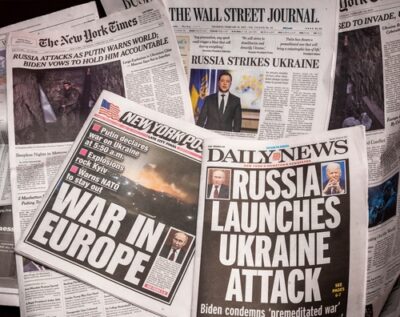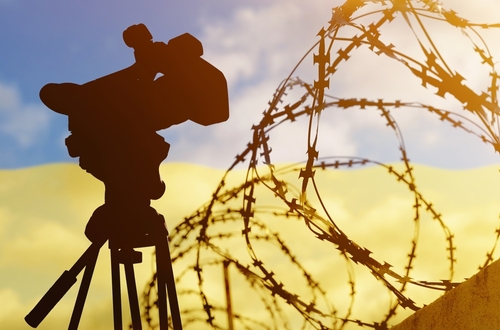The Ethical Journalism Network’s latest independent report reveals worrying threats, but positive reconstruction efforts to rebuild media infrastructure and reliability
Belgium, (Brussels Morning Newspaper) An invasion is an invasion, that knows no respite or holiday. As we sit watching the aesthetic deflagrations of Christopher Nolan’s very recent film on Robert Oppenheimer, the father of Prometheus of the atomic bomb, it seems difficult not to think about the current situation gripping Eastern Europe; and not only because of an obvious and automatic comparison on the conduct of the Russian-Ukrainian conflict, the bombings, the invasions that, since 24 February 2022, have affected the country and the entire public information. But above all because telling the truth and remaining impartial, when this is painful, is a difficult but necessary task, as journalist Jean-Paul Marthoz reminded us. In the first instance for journalists.
That war is, at no time, a protected space for journalists, is an inveterate axiom, and is almost naturally linked to the loss of democracy; but the current conflict has revealed a huge fault in the global communication system.

In this macabre and complicated dance, the perpetual threat to information is among the most powerful weapons of mass (intellectual) destruction. Not only because of the unrelenting human casualties: as of May 2023 at least 17 civilian journalists and media workers have been killed since the very beginning of the Donbas conflict in 2014. Disinformation, propaganda, and artificial intelligence are an insistent and persistent threat to journalism; but in this precise war context, the “disinformation weapon” has literally buried the truth.
“Ukraine media: defiance and truth-telling”, the ultimate report.
In the midst of conflict, the recent report from the Ethical Journalism Network, (from now on available online), launched on 10 July 2023 in Brussels and with an online event, stands as a tool for knowledge and monitoring of the state-of-the-art of the Ukrainian media landscape, a deformed mirror of the global situation of press freedom, continually put at risk.
A dense and worrying report, whose reading becomes all the more necessary for this reason; a report also rich in information and reflections for the present and future reconstruction of an international protection and training network to support journalists, as well as their intellectual independence.
If, before the war, Ukraine’s media environment was “complex, competitive, fascinating and diverse” – quoting the paper – and its construction a process as long as the independence phase since 1991, now, after the difficulties of the Covid and Pandora Papers scandals between 2019 and 2021, the entire system is “melting in the fire of the war”, as Diana Dutsyk, founder of the Ukrainian Media Communication Institute, claims.
And, even more surprisingly, compared to previous Balkan conflicts, the room for maneuvering of the independent journalistic scene has suffered something of a setback, despite the contradictory and globalized hyper-connectedness of communication, and the numerous alternative channels of dissemination. Not only for the independent organs operating from both the Russian and Ukrainian sides, where proximity to the conflict is clearly a major risk factor; but especially for the diaspora of journalists in exile, who seem entrenched in a reality of endemic incommunicability.
The human and physical devastation caused by the conflict is there for all to see; that, linked to the transmission of truth through communication is more subtle but no less devastating. The reduction of pluralism in information, accentuated by the oligarchic forcing, contradictory practical support over moral indications, hostile and toxic communication, dubious transparency over official news management, violence, and gender inequalities, have exacerbated this un-powerful climate for journalists.

On the one hand, the replacement of Russian propaganda in Ukrainian TV and radio broadcasts has diminished public access to trustworthy information; on the other hand, corruption, forced censorship, and an apologetic view of Ukraine’s conduct of the conflict, drastically and dangerously reduced the gap between invader and invaded, increasing the disinformation trap, distorted by fake news produced by artificial intelligence.
If the words security and the defense of life in the context of war are primordial in the safeguarding of human heritage, as far as information is concerned, many are the achievements and material and moral supports made to raise awareness, monitor processes, and advocate the general public.
And much will still be done to train journalists and new generations of professionals in the correct information, in the defense of impartiality against the threats of disinformation at all costs, in a legal and psychological protection frame, and in the networking of an international community on media.



